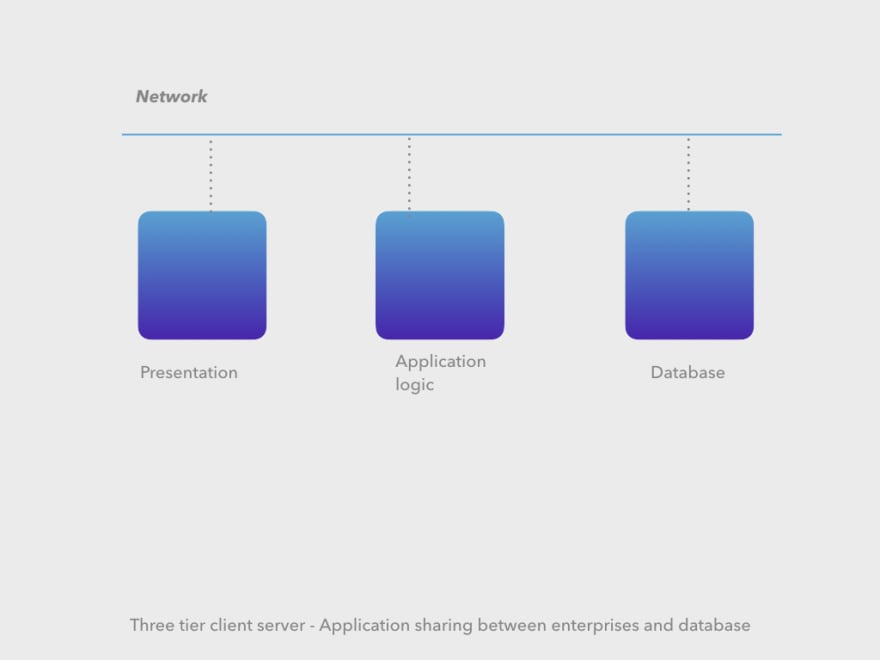This pattern consists of two parties; a server and multiple clients.
The server component will provide services to multiple client components
Clients request services from the server and the server provides relevant services to those clients.
Two - Tier Client/Server Structure
A two-tier architecture is where a client talks directly to a server, with no intervening server. It is typically used in small environments
Three tier architectures
In the three tier architecture, a middleware is used between the user system interface client environment and the database management server environment.
The widespread use of the term 3-tier architecture also denotes the following architectures:
• Application sharing between a client, middleware and enterprise server.
Divide middleware products into two categories:
○ Primitive middleware– The middleware layer that is able to tie together many different systems to create a single logical system, a virtual system.
○ Database-oriented middleware – It uses a primitive middleware to more information to and from a database.
• Application sharing between a client, application server and enterprise database server.
Presentation layer
Supports the GUI. Sometimes this is called a GUI-lite application. There may be many different kinds of GUI.
Application logic
Includes all function and procedures that make the application an application for a particular domain.
Database
A large computational server could act as a mathematical engine.
Resoruces
http://infolab.stanford.edu/~burback/dadl/node107.html
https://towardsdatascience.com/10-common-software-architectural-patterns-in-a-nutshell-a0b47a1e9013




Top comments (0)